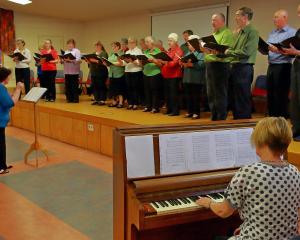
Earlier this year, West Otago Community Board commissioned Beca Engineering to prepare a seismic report for the area's five community halls, in Tapanui, Heriot, Crookston, Dunrobin and Waikoikoi.
The buildings range from traditional rural halls built before 1935 to extensive, multi-purpose complexes, such as those in Heriot and Tapanui, built between 1989 and 1992.
All achieved ratings of 50%NBS (New Building Standard) or higher: West Otago (70%), Heriot (100%), Crookston (80%), Dunrobin (60%) and Waikoikoi (50%).
Earthquake-prone buildings are defined as those that fail to meet 34%NBS.
The West Otago Community Centre in Tapanui was built in 1992, and houses a 200-seat theatre, a gymnasium, a large social room, a meeting room and a commercial kitchen.
Board chairwoman and centre committee member Barbara Hanna said an unfavourable report would have left the community needing to make "hard decisions".
"We're relieved and pleased with the outcomes for all the halls. This was a very important exercise given the current regulations and emphasis on earthquake safety, so the various hall committees can now plan for the future accordingly."
In a written response to the report, Clutha District Council service delivery group manager Jules Witt said the results meant the halls would not require significant strengthening.
But he said communities could still choose to undertake strengthening, particularly if a hall was used for civil defence purposes.
"Several organisations such as Fenz, St John, etc are upgrading to 67% as they may not be able to use the building in the event of an emergency.
"Buildings likely to be needed as an emergency shelter or centre, or that enable response services to carry out their jobs in an emergency, have 12.5 years to upgrade, all other buildings have 25 years to upgrade."
Such strengthening should be planned in conjunction with other building upgrades, he said.














